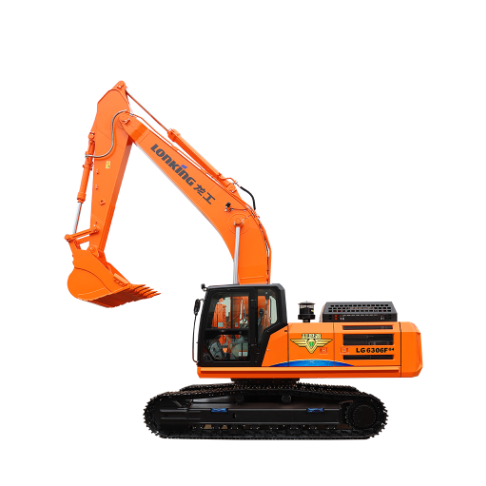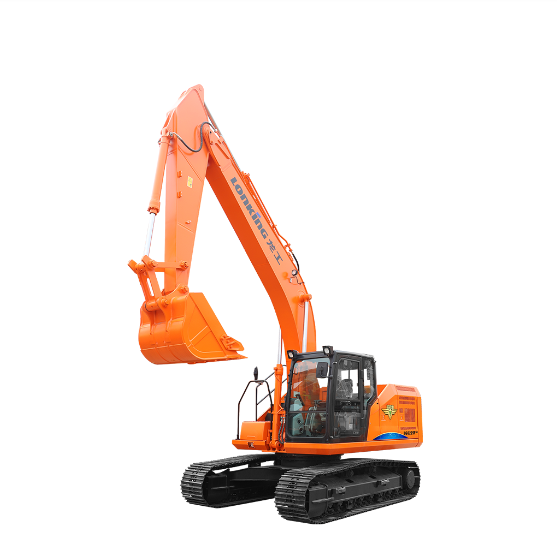Enhancing Excavator Lifespan Through Proper Maintenance
Excavators are essential machines on construction sites, prized for their power, precision, and versatility. Whether used for digging foundations, trenching, or material handling, these machines undergo heavy daily use. Without proper maintenance, their performance can degrade rapidly, leading to downtime and costly repairs. For construction companies aiming to maximize return on investment, a well-maintained excavator is vital to long-term operational success.

Establishing a Routine Maintenance Schedule
Daily Maintenance Checks
Routine daily checks are the first line of defense against long-term damage. Operators should inspect fluid levels, examine hydraulic hoses for leaks, check undercarriage conditions, and ensure that the track tension is within acceptable limits. Addressing minor issues early helps prevent major mechanical failures.
Scheduled Service Intervals
Following the manufacturer’s recommended service intervals is essential. Regular servicing includes changing engine oil, replacing filters, lubricating moving parts, and checking the cooling system. Keeping accurate records of these services ensures consistency and makes it easier to track wear patterns and component longevity.
Prioritizing Cleanliness and Storage
Cleaning After Every Use
Excavators often operate in muddy or dusty environments. Residual dirt and debris can damage hydraulic systems or cause corrosion. Regular cleaning, particularly around the bucket, joints, and air filters, helps extend equipment life and maintain efficient operation.
Proper Storage Conditions
When not in use, excavators should be parked on level ground in a secure area, ideally sheltered from weather elements. Exposure to sun, rain, or extreme temperatures can wear out seals, fade paint, and degrade electronics over time. Using machine covers or indoor garages significantly reduces this risk.
Monitoring Fluid and Filter Health
Checking Hydraulic and Engine Fluids
Hydraulic systems are the lifeblood of excavators. Monitoring oil quality and levels can detect early signs of internal wear or contamination. Engine coolant and diesel fuel should also be inspected regularly to avoid performance issues.
Replacing Filters Regularly
Air, fuel, and oil filters must be replaced as per the maintenance schedule. Dirty filters can cause engine inefficiencies or allow contaminants into sensitive components. High-quality filters help maintain system cleanliness and improve fuel economy.
Inspecting Wear Components
Tracking Undercarriage Condition
Since the undercarriage supports most of an excavator’s weight and movement, it experiences the highest wear. Track pads, rollers, and sprockets should be inspected for damage, excessive wear, or misalignment. Undercarriage issues, if ignored, can lead to costly repairs.
Evaluating Bucket and Attachments
Excavator attachments, particularly the bucket and its teeth, wear out over time. Monitoring for cracks, deformation, or dull edges ensures continued digging efficiency. Replacing worn-out attachments at the right time also protects the arm and hydraulic system.
Using Technology for Preventive Maintenance
Leveraging Telematics Systems
Modern excavators are often equipped with telematics systems that monitor operational hours, usage patterns, and fault codes. These systems help fleet managers schedule maintenance before issues escalate, reducing unplanned downtime.
Digital Maintenance Logs
Keeping digital maintenance records provides easy access to service history and helps identify recurring issues. These logs can also be shared across teams to ensure continuity in long-term excavator care.
Enhancing Operator Awareness
Training for Basic Maintenance Tasks
Operators are the first to notice performance shifts. Training them to perform basic maintenance tasks, such as fluid checks and visual inspections, empowers them to take early corrective actions. This reduces reliance on external technicians for routine upkeep.
Encouraging Responsible Operation
Excavators last longer when used responsibly. Avoiding abrupt movements, not exceeding load capacities, and operating within speed limits all contribute to minimizing mechanical stress. Educating operators on best practices is a long-term investment in the machine’s longevity.
Extending Component Lifespan
Lubricating Moving Parts
Proper lubrication reduces friction and wear on joints, arms, and cylinders. Using the correct grade of grease and applying it at specified intervals ensures smooth movement and extends the lifespan of high-load components.
Checking Battery and Electrical Systems
Excavators’ electrical components, including lights, sensors, and battery systems, are often overlooked. Regular inspections prevent power loss, malfunctioning indicators, and starting problems, especially in extreme weather.
FAQ
What is the most important maintenance task for excavators?
Regular inspection and fluid checks are among the most important tasks, as they help detect early signs of issues and prevent major breakdowns.
How often should I change the hydraulic fluid in an excavator?
Hydraulic fluid should generally be changed every 2,000 hours, but this may vary depending on the manufacturer’s recommendation and operating conditions.
Can improper storage damage an excavator?
Yes, improper storage can expose the excavator to moisture, sun damage, and temperature extremes, which can deteriorate seals, hoses, and electronic components.
Is operator training essential for maintenance?
Absolutely. Trained operators are more likely to follow best practices, identify early warning signs, and perform routine maintenance that keeps excavators running smoothly.
Table of Contents
- Enhancing Excavator Lifespan Through Proper Maintenance
- Establishing a Routine Maintenance Schedule
- Prioritizing Cleanliness and Storage
- Monitoring Fluid and Filter Health
- Inspecting Wear Components
- Using Technology for Preventive Maintenance
- Enhancing Operator Awareness
- Extending Component Lifespan
- FAQ

